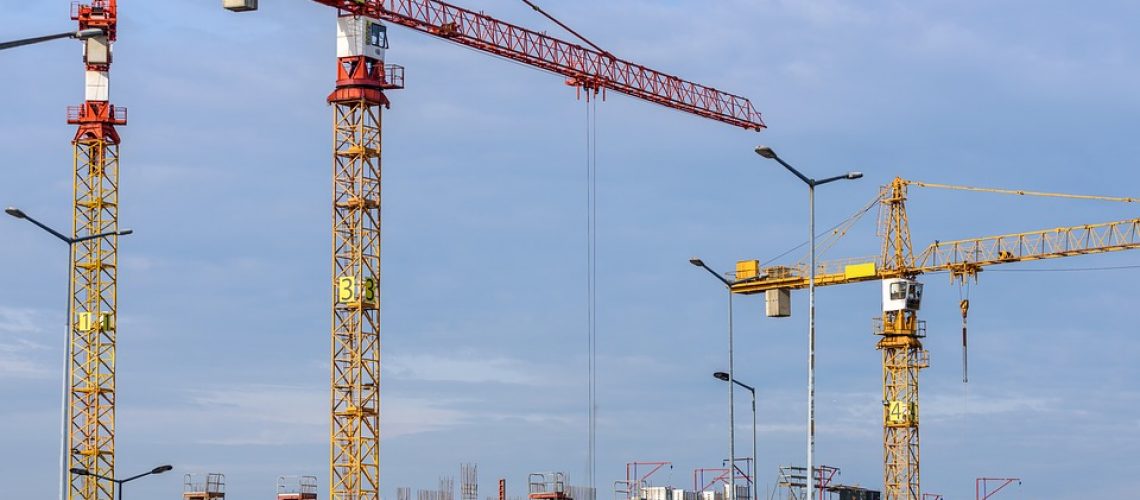The StatsSA November 2021 release of non-residential building plans pointed to early signs of weakening to come for the Commercial Property Building Sector in the run up to 2022.
“The square metreage of total industrial, retail and office space building plans passed declined by -43.4% year-on-year, following on a -33% year-on-year decline in October,” says John Loos, Property Sector Strategist at FNB Commercial Property Finance.
“Non-residential building stats can be notoriously volatile from month to month though, so we also view the broader trend on a 12-month moving total basis. Here too, we have seen a -7.8% decline in the 12-month moving total from a post-hard lockdown high in September 2021 to November 2021.”
He adds that while early days, therefore, the trend in square metreage of plans passed does appear to have been turning downward in recent months after a muted recovery coming out of 2020’s hard lockdowns.
“In addition, the post-lockdown levels of plans passed have remained well-below pre-COVID-19 levels. For the 12 months to November 2021, square metres of plans passed were still -16.5% below the 12 months to November 2019 and -36.1% below those for the 12 months to November 2018,” Loos says.
“Building completions, lagging plans passed considerably, declined mildly to the tune of -6.09% year-on-year as at November. And on a smoothed 12-month moving total basis were very slightly down by -0.4% for the 12 months to November, compared with the post-lockdown high of the 12 months to October.
“In short, total square metreage of plans passed points to a recent onset of a decline in new space planning, while space completed looks to have been peaking.”
Building trends by major property class
Loos says that where are the major “drags” on total building activity?
“Not surprisingly, Office Space planning and completions are the key drag, remaining low compared to pre-lockdown levels and on a long term decline,” he notes.
“We ignore the fact that office plans passed shot up by 239.1% year-on-year. This small sector’s monthly moves are highly volatile. But for the 12 months to November 2021, square metreage of office space plans passed were -30.8% below the 12 months to November 2019, and space completed was a massive -65.6% down over the same period.
“The low level of new office space development is not surprising, with office vacancies nationally at around record levels. Employment numbers in the office-bound economic sectors have declined since lockdowns started in 2020, greater levels of remote work are the future, and more efficient use of space through the “hoteling” of desk space is a key factor too.”
Loos adds that for the 12 months to November 2021, square metreage of retail space plans passed were -21.6% below the 12 months to November 2019, and space completed was -20.2% down over the same period.
“Besides a weakened consumer, due to a severe 2020 recession, greater levels of online retail also challenge the Retail Sector.”
He also says that industrial building activity is the “least weak” of the 3 segments. Besides being the most affordable property class of the 3 majors, it receives something of a boost from greater online retail levels requiring an increased focus on logistics and warehousing.
“But its macro fundamentals remain weak, manufacturing production remaining mediocre and economy-wide inventory levels being low due to years of economic stagnation,” Loos adds.
“For the 12 months to November 2021, square metreage of industrial space plans passed were -11.5% below the 12 months to November 2019, and space completed was +10.1% up over the same period.”
Conclusion
Loos says that in short, non-residential building activity appears to be in the early stages of a declining trend after a muted post-hard lockdown recovery out of 2020.
“The onset of interest rate hiking late in 2021, and more hiking expected this year, should arguably be expected to dampen building activity in the near term,” he notes.
“Not surprisingly, the Office segment is the major longer run drag on overall building activity, challenged by a very high vacancy rate on a national average basis.
“Given the key structural changes in office work, including a shift to greater remote work and the hoteling of office space, the Office Segment is likely to be an area of long-term building activity underperformance, with its share of total building activity likely to decline further in the longer term. Industrial space building activity is at the strongest end of the spectrum, although still weak.”
Loos also says that industrial property has important structural changes too, with greater levels of online retail requiring it to gear up in the area of warehousing and logistics.
“However, the Manufacturing Sector remains mediocre, and economy-wide inventory levels are low due to a longer-term economic growth stagnation, so while Industrial building activity has been better than Retail and Office Space, the data is not strong by historic standards.”

